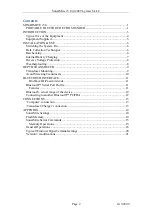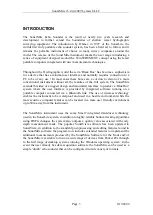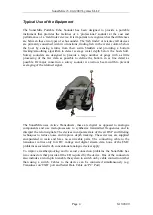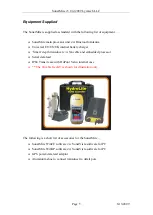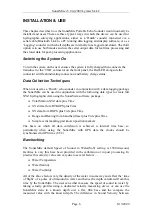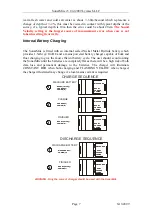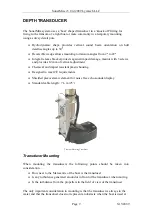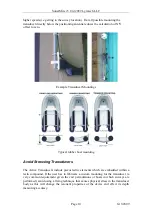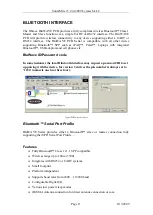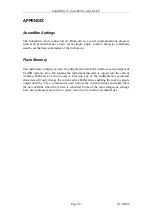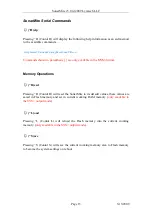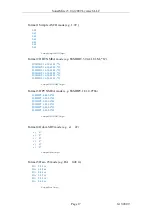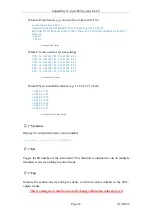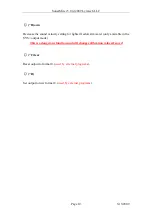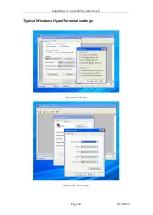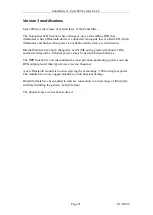
SonarMite v3.0 (c)2009 Lymtech LLC
Page 6
6/13/2009
INSTALLATION & USE
This chapter describes how the SonarMite Portable Echo Sounder would normally be
installed and used. There are three typical ways in which the device can be used for
hydrographic surveying applications, either as a „Dumb‟ sounder connected via a
serial cable/Bluetooth Link to a PC running data logging and display software, or as a
„Logging‟ sounder in which all depths are internally time tagged and stored. The third
option is to use both modes and use the serial output data for real time processing and
the stored data for post-processing applications.
Switching the System On
To turn the system on the user ensures the system is fully charged then connects the
transducer to the „TXR‟ connector on the front panel, the Red LED alongside the
connector will flash indicating connection and battery charge status.
Data Collection Techniques
When not used as a „Dumb‟ echo sounder in conjunction with a data logging package
the SonarMite can be used in conjunction with the following data types to create full
XYZ hydrographic data using the SonarVista software package….
Total Station XYZ data plus Time
XYZ data from RTKGPS plus Time
XY data from DGPS plus Tide plus Time
Range and Bearing from hand held laser plus Tide plus Time
Simple event marking past known position markers
The basis on which all data correlation is achieved is internal time base, so
particularly when using the SonarMite with GPS data the clocks should be
synchronised to GPS time (UTC).
Barchecking
The SonarMite default Speed of Sound in Water(SoS) setting is 1500m/second,
facilities to vary this have been provided in the calibration or in post processing. In
practice this velocity value can vary due to several factors …
Water Temperature
Water Salinity
Water Turbidity
All of the above factors vary the density of the water in some way and effect the „time
of flight‟ of a pulse of ultrasound in water and hence the depth calculated from this
time by the SonarMite. The user can either measure the speed of sound in water by
taking velocity profiles using a dedicated velocity measuring device or can use the
SonarMite static in a known depth over a flat, firm base and the compare the
measured value with the known depth. The difference in Sound Velocity between


